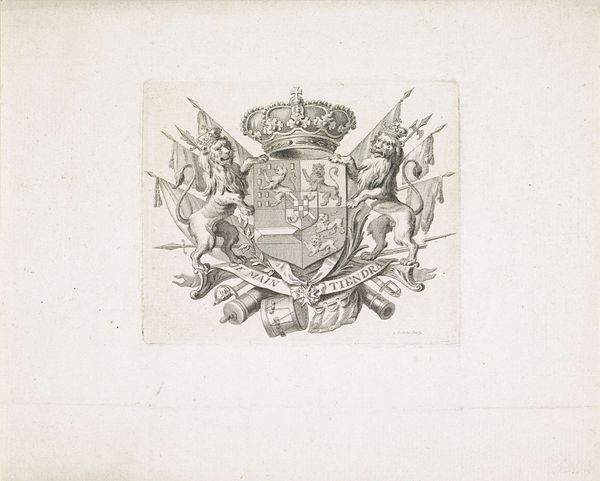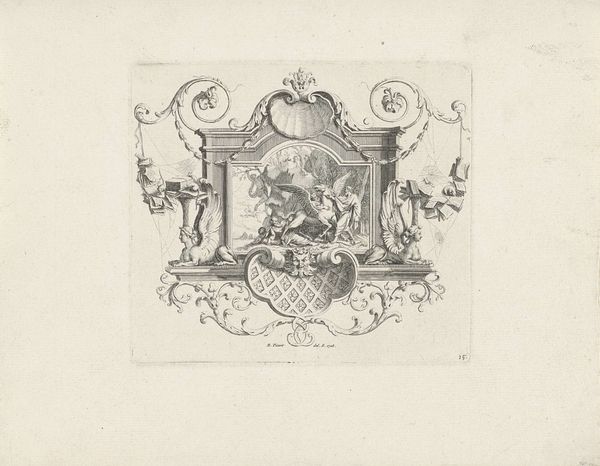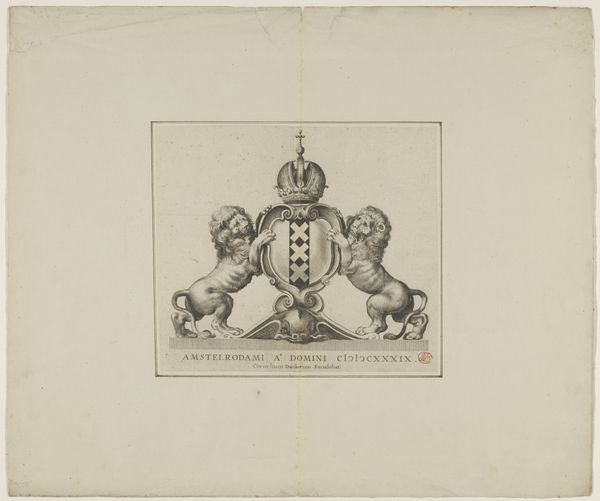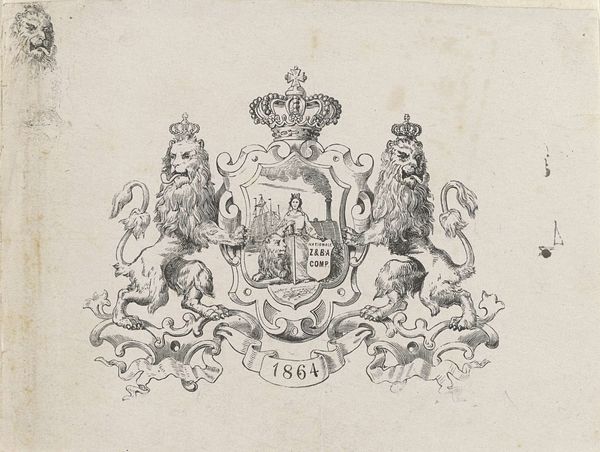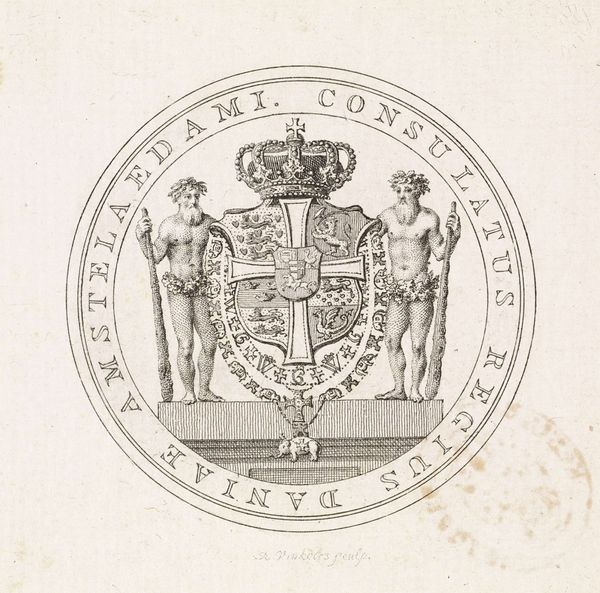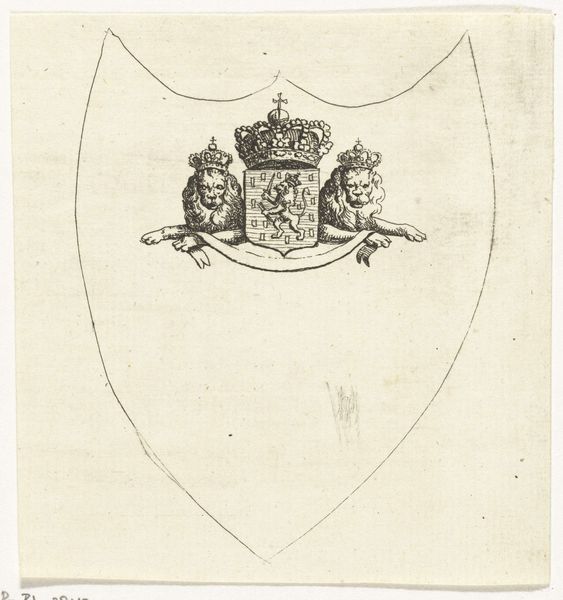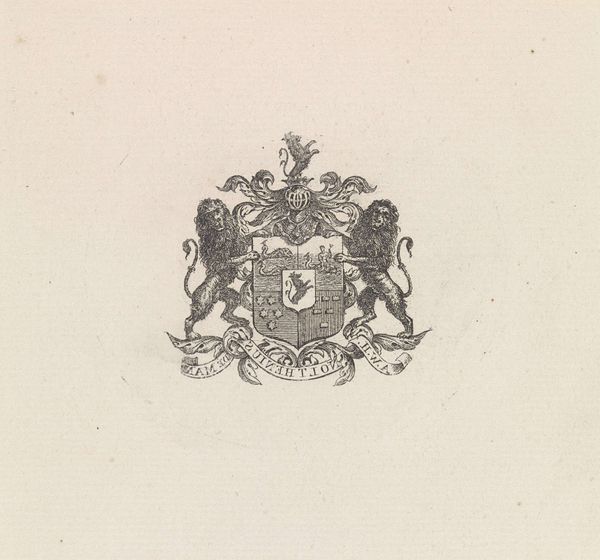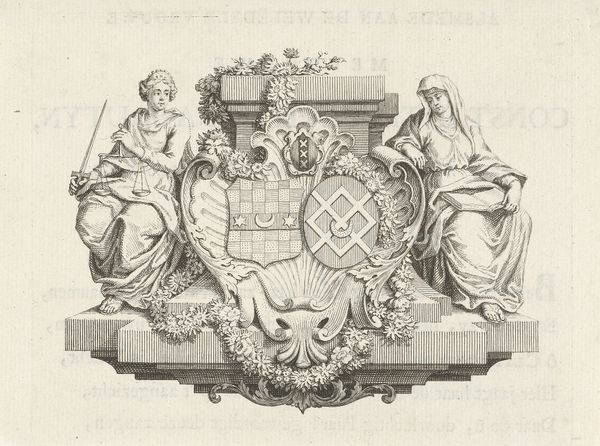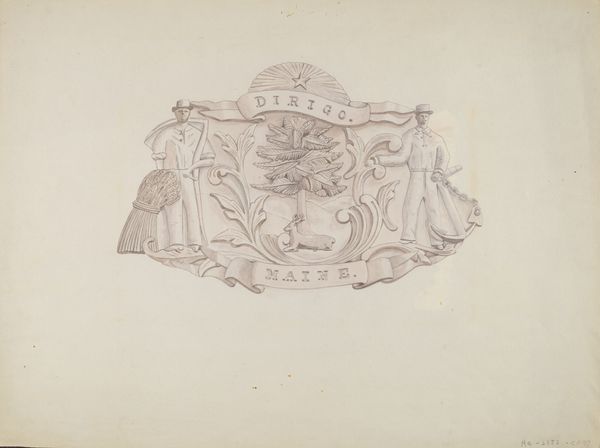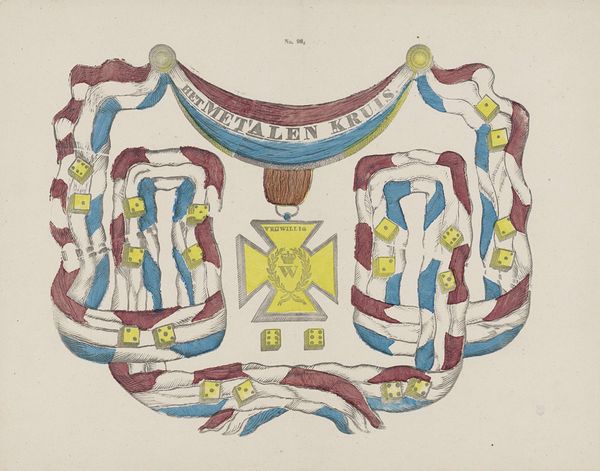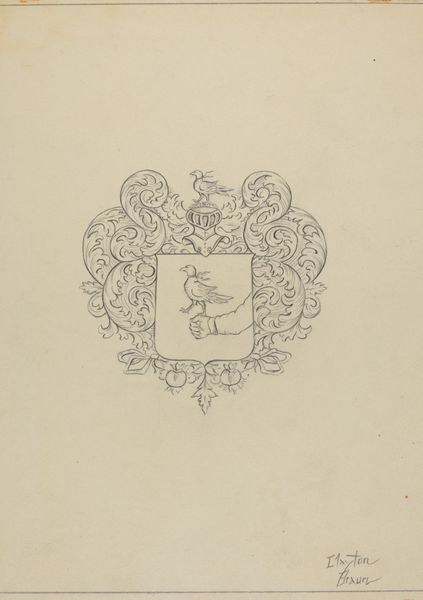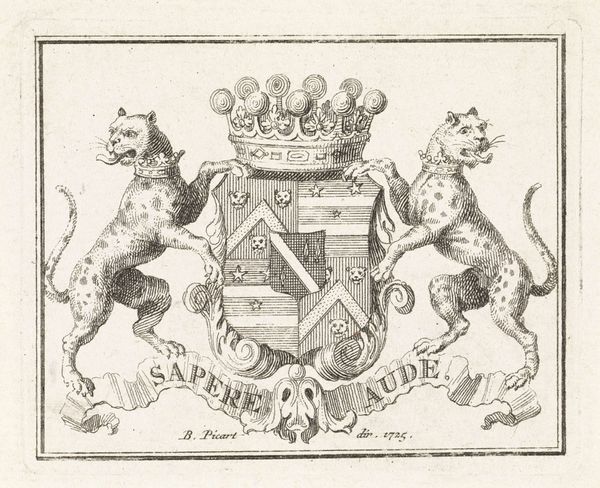
Wapen van de Zeeuwse familie Huyssen van Kattendijke 1830 - 1845
0:00
0:00
henricuswilhelmuscouwenberg
Rijksmuseum
graphic-art, print, engraving
#
graphic-art
# print
#
form
#
line
#
history-painting
#
academic-art
#
engraving
#
realism
Dimensions: height 135 mm, width 147 mm
Copyright: Rijks Museum: Open Domain
Curator: Welcome. Here we have a print titled "Wapen van de Zeeuwse familie Huyssen van Kattendijke," or "Coat of Arms of the Huyssen van Kattendijke Family from Zeeland," dating from around 1830-1845. It’s attributed to Henricus Wilhelmus Couwenberg and rendered using engraving. Editor: Well, it’s certainly striking! A bit severe, though, isn't it? Those nude figures… hefting clubs. It feels very much of its time – a self-conscious display of power, carefully crafted with very clear visual conventions. Curator: Indeed. The piece reflects the importance of lineage and status during that era. Family crests like this were powerful symbols, demonstrating heritage and social standing. Academic art highly valued tradition. These weren't merely decorations; they served as pronouncements of identity in a hierarchical society. Editor: Precisely. Consider the medium—engraving—such a deliberate, labour-intensive process. Think about the artisan creating the original copperplate. It wasn't just art; it was highly skilled manufacture, linking artistry to production. Also the motto - "Nec Timide Nec Tumide". Curator: Meaning, "Neither timidly nor proudly" reflects an intended moral stance of the family. It also demonstrates the political role that imagery had for family crests and identity. Editor: Right. How it was commissioned, distributed, perhaps displayed on everything from carriages to cutlery, solidifies how interwoven production and consumption of art can reflect and solidify class distinctions. Curator: Certainly. Moreover, the composition adheres to established heraldic conventions, indicating a desire to be seen as legitimate within the social order. Line engraving offered precise, repeatable images—perfect for disseminating the family’s identity. Editor: And the use of specific motifs must surely have signified distinct attributes the family wanted to signal through their crafted representation. The club-wielding figures definitely suggest more than good intentions. Curator: Perhaps it was a display of authority rooted in societal structure! These symbols tell stories. It offers us insights into that time. Editor: I agree, from materials to the people that were buying it. Understanding production informs so much about art and cultural intention. Curator: Precisely, there is always much more to unpack. Thank you. Editor: Always a pleasure!
Comments
No comments
Be the first to comment and join the conversation on the ultimate creative platform.
